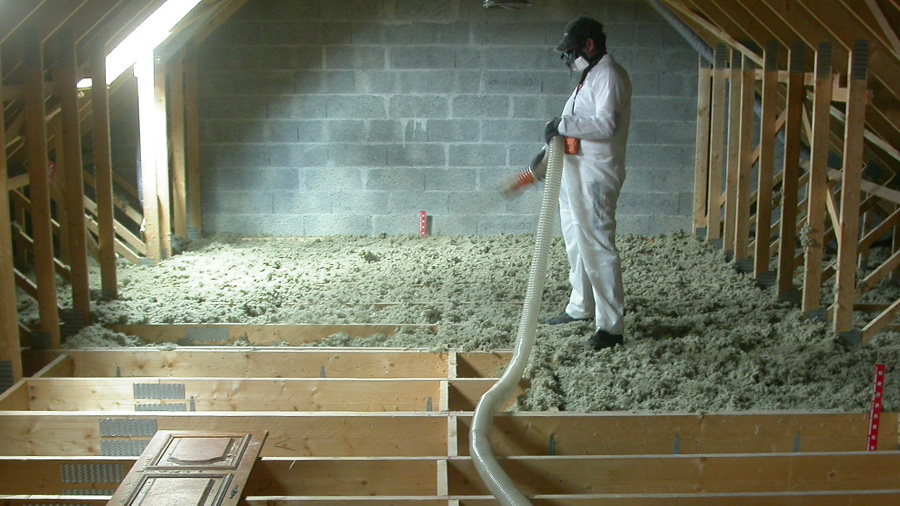Factsheet
Implementation of insulating unused roof spaces with loose-fill insulation products

In a house with little or no insulation, the roof space accounts for most heat loss, reaching 30%. In summer, it is the space most exposed to sunshine. For all-season comfort and energy savings, it is therefore essential to install efficient thermal insulation in roof spaces. Close-up of a technical solution: loose-fill insulation.
Using an air pump, this system involves blowing a loose-fill insulation product into unused roof spaces. The most commonly used are mineral products, such as rock wool and glass, and biosourced products, like cellulose, cotton, sheep wool, linen and hemp.
Rules to follow
If insulation is blown into plasterboard facing with timber or metal framing, follow the rules in Document Technique Unifié (DTU) 25.41, which is the unified building code concerning the maximum permissible insulation fill based on the structure's size, fixing system, framing system, spacing and type of work (new, complete rehabilitation or insulation of existing ceiling).
Exercise caution when there are heat sources, such as smoke ducts, downlights and unprotected electrical equipment. If this is the case, refer to the guide Cahier du CSTB No. 3693_V2 of June 2015, DTU 24.1 P1, and the Technical Appraisals of the products concerned, which provide specific rules to follow during installation.
The installation of a water vapor barrier system can limit the risk of condensation reaching the insulated floor. The barrier also helps to improve the airtightness of the spaces below the roof room. The NF DTU 45.11 standard, soon to be published, specifies the conditions requiring the installation of a water vapor barrier system (humidity levels in the rooms below the roof room, resistance to water vapor migration through the insulated floor, level of ventilation of the roof room, type of covering, climate zone).
Thermal resistance: conditions to achieve the desired performance
Due to variations in temperature and humidity, the thickness of loose-fill insulation can decrease over time (settling). Because thermal resistance is proportional to the thickness of the blown insulation, it in turn decreases. It is therefore important to consider this phenomenon when installing insulation to achieve the energy savings expected by the project owner.

ACERMI for long-term high insulation performance
The information on ACERMI certificates makes it possible to install high-performance, durable insulation when observing the installation requirements in DTU 25.41, NF DTU 45.11, Technical Appraisals of insulation products, and the guide Cahier du CSTB No. 3693_V2 of June 2015 (airtightness of walls, treatment of position points, measurement of the thickness of loose-fill insulation on the worksite, installation of wind deflectors, blowing procedure, etc.).




